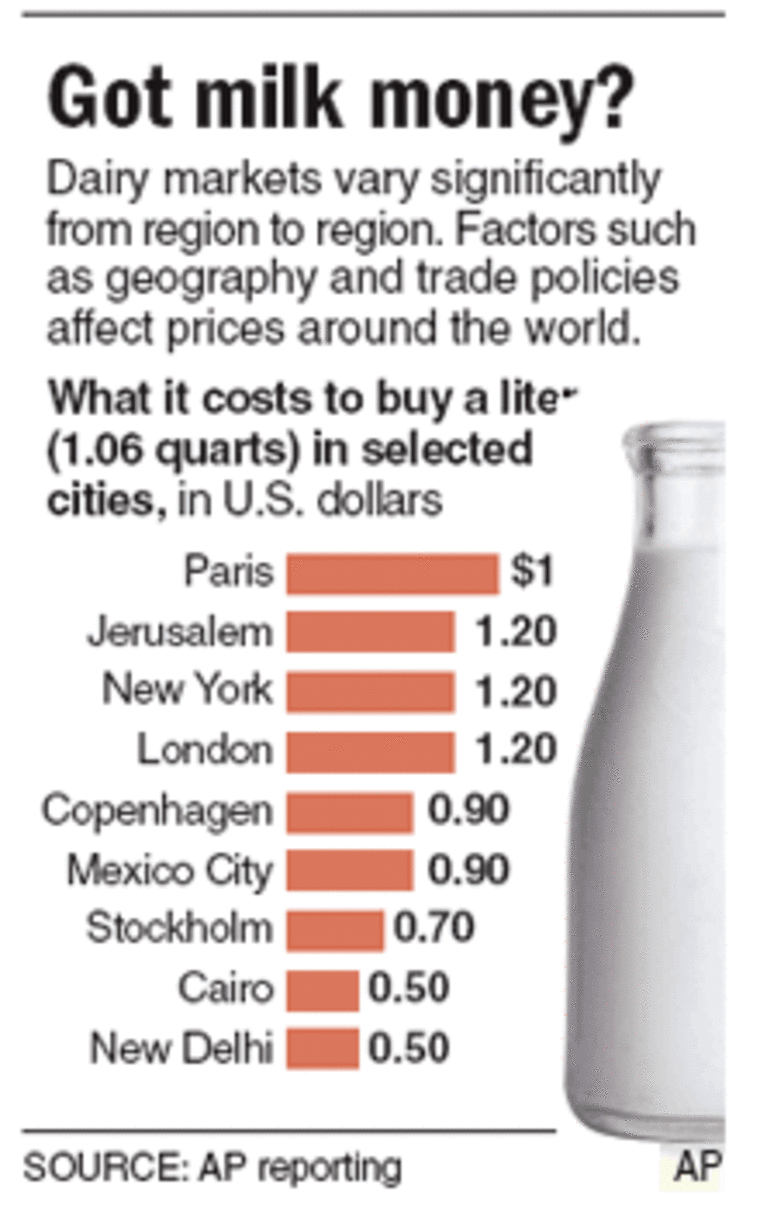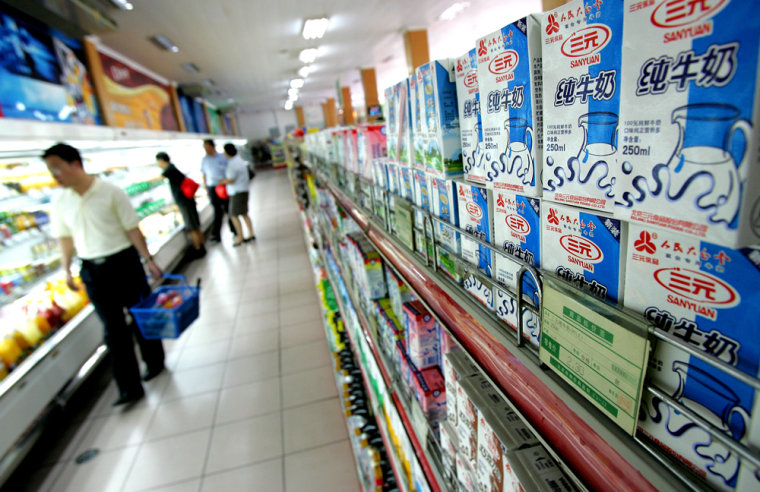Unlike oil, we probably won’t ever run out of milk. But the two liquids have one thing in common: They’re trading at record highs.
Reasons include growing appetites for dairy foods in China and elsewhere in Asia, where chains such as McDonald’s and Starbucks are introducing unfamiliar taste buds to cheeseburgers and lattes. Other factors are rising costs for animal feed, shrinking European production and long-standing drought in Australia and New Zealand, the world’s largest milk-exporting region.
Paying more for milk is causing an uproar in Germany, where families consider providing children with an affordable glass of milk a fundamental right. It is also a concern for consumers in the United States and elsewhere in Europe.
Milk prices hit a record last month in the United States, where consumers paid an average $3.80 a gallon, compared to $3.29 in January, according to the U.S. Department of Agriculture. It forecasts prices will remain high throughout the year.
Prices are likely to remain high worldwide until dairy farmers add more cows or shift production to powders, which are more easily traded than the liquid stuff.
International dairy prices increased 46 percent between November 2006 and April 2007, with milk powder prices increasing even faster, according to the Food and Agriculture Organization.
Companies like candy giant Hershey Co. that use dairy for their products are feeling the pinch. But in many parts of the globe, dairy farmers are cheering.
“Global demand has been extraordinary for American dairy products, but global supplies of dairy products have been exceptionally tight,” said Michael Marsh, head of the Western United Dairyman trade group in California, the top dairy-producing U.S. state.

“From the American dairy farmers’ perspective, you have almost a perfect storm.”
In China, milk consumption has soared along with rising incomes, a massive expansion of the dairy industry and the increasing familiarity with — and taste for — non-native foods among young urbanites.
Pizza Hut sells its cheese-laden pies even in smaller Chinese cities, and milk, yogurt and individually packaged cheese slices can be found in small local supermarket chains. Foreign-owned stores such as France’s Carrefour, Germany’s Metro and America’s Wal-Mart cater to slightly more sophisticated tastes, selling crumbly blue cheeses, wheels of gouda and red-waxed balls of Edam.
Products from Chinese dairy giant Mengniu even carry the label of being the official milk of the Chinese space program. Its drinks promise to “fortify the Chinese people,” with packaging showing a space-suited boy clutching a glass of creamy goodness.
China’s growing love of dairy is a far cry from two decades ago, when the country was just opening up to foreign products and availability was limited to milk, yogurt and, on rare occasions, butter. The Dairy Association of China estimates consumption will rise by 15-20 percent annually in the coming years.
Premier Wen Jiabao, on a visit to a dairy farm last year, said his “dream” is for each Chinese child to consume a pint per day. He is boosting production to try to keep up with demand, but the world’s most-populous nation remains a net importer of dairy products, including milk powders.
The boom in biofuels is also pushing up corn prices and, as a result, making animal feed more expensive. Farmers have responded by raising milk prices.
Governments in the United States, Canada, the European Union and Japan have a range of policies, including tariffs and quotas, that insulate their milk from international prices, according to the Food and Agriculture Organization.
These systems are under strain, as high rewards in the globalized market are inspiring milk producers to challenge the old practices.
In Germany, where milk prices are set annually after negotiations between producers and powerful retailers, retailers have been holding prices down to the tune of almost 15 percent since 2002. Since July, they’ve been paying producers an extra 5 to 7 cents a quart after the producers threatened to take their milk elsewhere.
Since May, the price for a half-pound package of butter has gone up from $1.06 to $1.13 in Germany, while the price for a gallon of milk has increased from $3.20 to $3.60.
In a country where beer is cheaper than milk, higher prices for dairy products have led to a flurry of condemnation.
Germany’s HDE retail association blames the Chinese and European Union milk quotas. The quota system, imposed since 1984, prevents farmers from producing more to keep up with demand.
The quota system will come to an end in 2015. In the meantime, EU spokesman Philip Tod said the EU Commission is allowing small — 0.5 percent — annual increases in quotas through 2008.
Hershey Co.’s chief executive officer, Richard H. Lenny, said America’s largest candy maker may adjust its formula to use less lactose because of rising milk costs. Candy bar prices will also be reviewed, he said.
Franck Riboud, head of French yogurt maker Groupe Danone SA, said last month he will raise the price of dairy products in France by 2.5 percent, the first increase in two years, to help compensate for the rise in prices.
In the United States, milk processors and distributors “are being challenged by the most stubbornly inflationary dairy markets in history,” said Gregg Engles, CEO of Dallas-based Dean Foods, the largest U.S. processor and distributor of milk and other dairy products, where profits are down.
